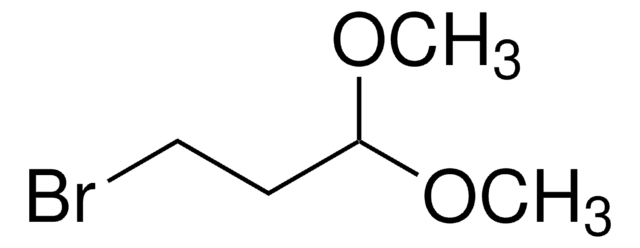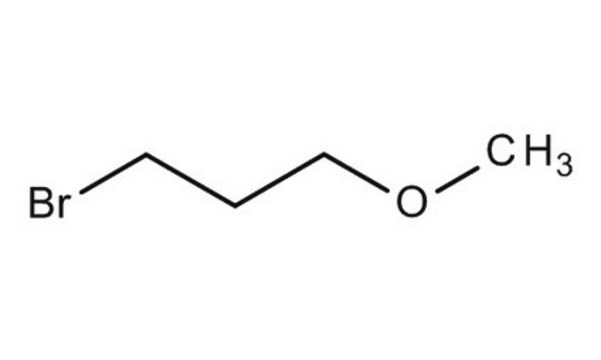167169
3-Bromo-1-propanol
97%
Synonyme(s) :
Trimethylene bromohydrin
About This Item
Produits recommandés
Pureté
97%
Forme
liquid
Indice de réfraction
n20/D 1.488 (lit.)
Point d'ébullition
62 °C/5 mmHg (lit.)
Densité
1.537 g/mL at 25 °C (lit.)
Groupe fonctionnel
bromo
Température de stockage
2-8°C
Chaîne SMILES
OCCCBr
InChI
1S/C3H7BrO/c4-2-1-3-5/h5H,1-3H2
Clé InChI
RQFUZUMFPRMVDX-UHFFFAOYSA-N
Vous recherchez des produits similaires ? Visite Guide de comparaison des produits
Catégories apparentées
Description générale
3-Bromo-1-propanol is an electrophile used as a substrate in nucleophilic substitution reactions and in the redox polymerization.
Application
Mention d'avertissement
Danger
Mentions de danger
Conseils de prudence
Classification des risques
Acute Tox. 4 Oral - Eye Dam. 1
Code de la classe de stockage
10 - Combustible liquids
Classe de danger pour l'eau (WGK)
WGK 3
Point d'éclair (°F)
149.0 °F - closed cup
Point d'éclair (°C)
65 °C - closed cup
Équipement de protection individuelle
Eyeshields, Faceshields, Gloves, type ABEK (EN14387) respirator filter
Faites votre choix parmi les versions les plus récentes :
Déjà en possession de ce produit ?
Retrouvez la documentation relative aux produits que vous avez récemment achetés dans la Bibliothèque de documents.
Les clients ont également consulté
Notre équipe de scientifiques dispose d'une expérience dans tous les secteurs de la recherche, notamment en sciences de la vie, science des matériaux, synthèse chimique, chromatographie, analyse et dans de nombreux autres domaines..
Contacter notre Service technique













